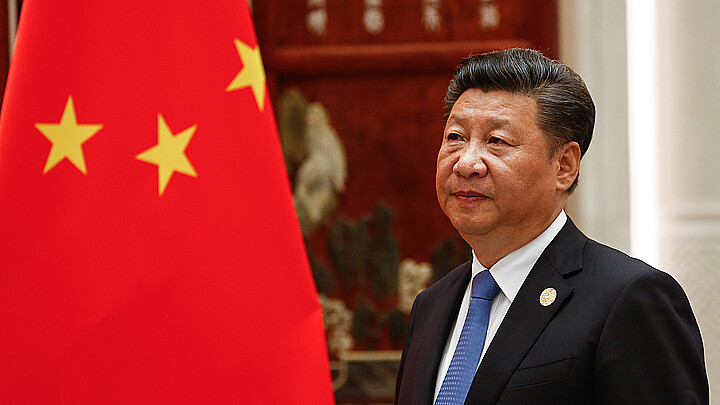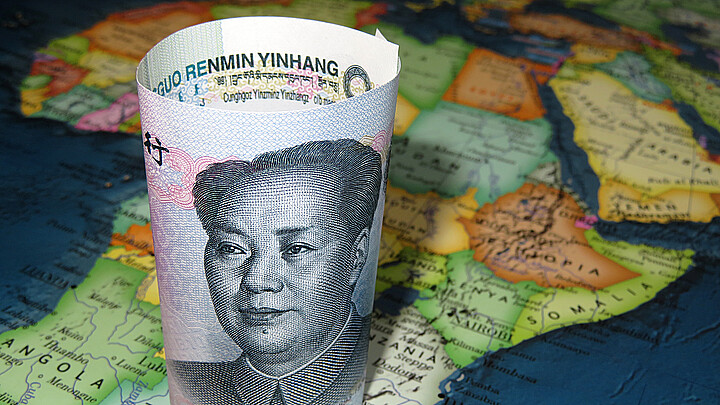Business
Will Ukraine crisis accelerate China's push for the yuan as an international currency?
For years, Beijing has pushed to have the yuan accepted as an international currency, while countries unfriendly to the U.S. such as Venezuela, Iran, Russia, and North Korea have been looking for a dollar alternative for international trade
March 18, 2022 12:53am
Updated: March 19, 2022 11:38pm
For years, Beijing has pushed to have the Chinese yuan accepted as an international currency, while countries unfriendly to the U.S. such as Venezuela, Iran, Russia, and North Korea have been looking for a dollar alternative for international trade. Western economic sanctions against Russia are now accelerating talks between Moscow and Beijing about finding "workaround" solutions, as Federal Reserve Chairman Jay Powell is warning the invasion of Ukraine may step up Beijing's efforts to cut its dependency on the dollar.
Over the past decade, it has irked Beijing that, in spite of being the number two economic power, China's currency has never become truly international. Technically, the yuan's admission to the International Monetary Fund's (IMF) Special Drawing Rights currencies (SDR) in 2016 makes the yuan an international currency. In practice, however, the yuan has very limited internationalization. Only 10.9% of the SDR is comprised of yuan. The only country which recognizes the yuan as an official currency is China, whereas about 15 countries use the U.S. dollar as their only official currency or an additional official currency.
Although China is the world's largest exporter, the Chinese yuan accounts for only 2% of global payments, around 2% of foreign currency reserves in central banks, and 4% of forex trades. The dollar, by contrast, has a 40% share of global payments, 61% of foreign currency reserves, and 88% of forex trades. China would be able to increase these numbers if it could convince foreign countries to settle international trades in yuan and to hold yuan in reserves. This would decrease Beijing's dependence on the dollar and partially immunize China from future sanctions. The Ukraine invasion has created an opportunity that Beijing hopes to capitalize on, by using the yuan and Chinese-based systems to help Russia mitigate the effects of Western sanctions.
So far, the sanctions against Russia have been extremely damaging, and there may be more on the way. The personal assets of Putin and Foreign Minister Sergei Lavrov have been frozen in the United States, European Union, Britain and Canada. The U.S., EU and U.K. have banned transactions with Russia's central bank, Ministry of Finance and sovereign wealth fund. Additionally, they have frozen the assets of all three entities. Foreign exchange assets of the Russian central bank have been frozen at the Federal Reserve, Bank of England, Bank of Canada, and European Central Bank. Furthermore, seven Russian banks have been removed from the SWIFT system, making it nearly impossible for Russia to buy or sell on world markets.
Germany has refused to certify the Nord Stream II gas pipeline, reducing Russia's ability to earn money through the sale of gas. The EU, U.S., and Britain have also banned Russian planes from flying through their airspace, while shipping giants Maersk, MSC, and CMA CGM have all halted deliveries to Russian ports. Additionally, Visa, Mastercard, American Express and Paypal have suspended service in Russia.
The ruble is crumbling. A week before the invasion, the exchange rate was about 72 rubles to the dollar. As of March 7, it was 153. Russia's foreign debt is roughly 32% of GDP.
As the ruble plummets and much of Russia's assets have been frozen, it is becoming less likely that Russia can repay its debts. Moody's has decreased Russia's credit rating to Ca (the second lowest on its rating scale), while Fitch and S&P Global have downgraded Russian bonds to "junk." The market for Russian bonds is basically at a standstill, with very few buyers and some clearinghouses refusing transactions. If Russia defaults on foreign-held debt, there is a chance that bondholders could sue to place liens on Russian assets abroad.
China is expected to help soften the blow of economic sanctions, but it will be difficult to complete financial transactions in meaningful quantities. Cryptocurrency has been widely bruited about as a hypothetical alternative for the two countries to take. With the digital ruble not yet launched, the digital yuan would be the only possible choice. At the moment, however, major coin exchanges do not handle digital yuan. If China were to set up a platform for Russia to buy and sell digital yuan, they would also have to create a mechanism to accept and process payments in rubles.
Russia's central bank developed a SWIFT alternative, called the System for Transfer of Financial Messages (SPFS). The system only operates during Moscow working hours, Monday through Friday. It has a restrictive message size and no real international connectivity, with service limited to a few countries, such as Armenia, Turkey, Uzbekistan, and Kazakhstan. Alternatively, Russia could adopt China's CIPS payment platform. Drawbacks would be that CIPS only works with Chinese yuan and that it piggybacks off of the SWIFT network, in order to complete settlement.
A third option would be a bilateral system of phones, faxes, and messaging apps, similar to what has been used by some Iranians to bypass U.S. sanctions. A trusted partner in a third country could receive the orders and make and receive payments on behalf of Russian importers/exporters. Unlike SWIFT, which is plugged directly into the banking networks, this system would have major security flaws and be prone to errors.
To overcome the lack of access to U.S. credit cards, Russia has announced that it will be adopting China's Union Pay. For Russian citizens to be able to use Union Pay within Russia, processing systems would first have to be established which link with Russian banks. Meanwhile, the real goal of a "workaround" is to allow Russia to bypass Western sanctions and trade internationally. Currently, Union Pay is not really set up for that. Some vendors in other countries may be on the Union Pay network, but as a rule, the only Union Pay cards that work outside of China are those which have a Visa logo. Visa's boycott of Russia would prevent them from allowing the issuance of Visa-linked Union Pay cards in Russia or linked to Russian banks.








